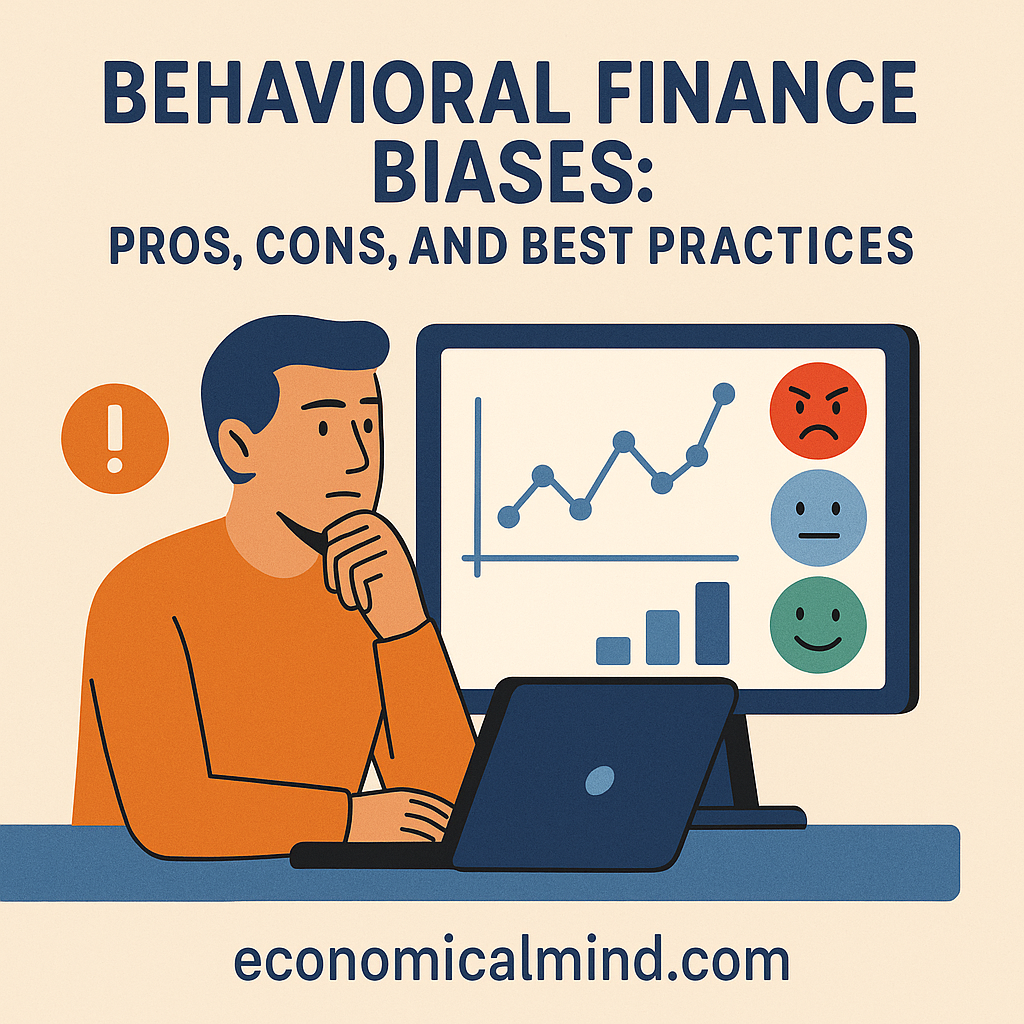
Even the most logical investors are still human. Emotions, habits, and subconscious biases can heavily influence financial decisions—often in ways we don’t realize. Behavioral finance explores these psychological factors that drive real-world money choices, helping investors understand why they make certain decisions and how to improve them.
Let’s look at the key pros, cons, and best practices for mastering your mindset in investing.
The Pros of Understanding Behavioral Finance
Recognizing your mental patterns gives you an edge over investors who operate on instinct alone.
- Improved decision-making: Awareness of emotional biases helps prevent impulsive buying or panic selling.
- Long-term focus: Understanding your behavior reinforces discipline during market volatility.
- Enhanced risk management: Knowing your comfort with risk helps you build a portfolio aligned with your temperament.
- Better self-control: You can identify when fear, greed, or overconfidence are influencing your strategy.
- Opportunities to exploit market inefficiency: Behavioral patterns often cause mispricings that disciplined investors can take advantage of.
In short, knowing your mind is one of the most underrated investing tools.
The Cons (and Pitfalls) of Behavioral Biases
When ignored, behavioral biases can sabotage even the most well-designed portfolio.
- Emotional investing: Reacting to headlines or short-term fluctuations often leads to poor timing.
- Overconfidence: Believing you can consistently beat the market can lead to unnecessary risk-taking.
- Loss aversion: People feel the pain of losses more strongly than the joy of gains, which can cause hesitation or selling too soon.
- Herd mentality: Following trends or crowd behavior can inflate bubbles or lead to poor entry points.
- Confirmation bias: Seeking information that supports your existing views while ignoring contradictory data narrows perspective.
These biases can quietly erode performance over time—often without investors realizing it.
Best Practices to Manage Behavioral Biases
You can’t completely remove emotions from investing, but you can design systems to minimize their impact.
1. Create a Written Investment Plan
Outline your goals, asset allocation, and risk tolerance before investing. This plan acts as an anchor when emotions rise.
2. Automate Where Possible
Automatic contributions, rebalancing, and dividend reinvestment reduce the temptation to tinker with your portfolio.
3. Diversify Strategically
A diversified portfolio cushions against volatility and limits the urge to “chase winners.”
4. Limit Market Noise
Too much news and social media exposure increases anxiety and reactionary behavior. Focus on data, not hype.
5. Use Data-Driven Tools
Track your performance objectively. Comparing actions against long-term benchmarks helps keep perspective.
6. Reflect Regularly
Review your past decisions and note emotional triggers. Awareness is the first step toward behavioral control.
7. Work With a Trusted Advisor
An unbiased professional can offer a clear, data-based perspective when emotions cloud your judgment.
The Bottom Line
Behavioral finance reminds us that investing is as much about psychology as it is about math. The best investors aren’t those who eliminate emotion—they’re the ones who recognize it and manage it. By learning your behavioral patterns and applying structure, you can make more rational, confident, and profitable financial decisions.
